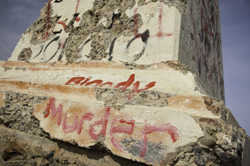New anti-graffiti to protect cultural heritage sites
Graffiti costs Europe an estimated EUR 90 million annually in cleaning costs and damages. Cultural heritage buildings require special anti-graffiti treatment due to the building materials used, and this drives costs up even further. The EU funded the development of a commercial anti-graffiti product for cultural heritage buildings through a project called 'Innovative anti-graffiti product for application in the cultural heritage of Europe' (EFFACEUR)(opens in new window) . Researchers improved on a novel formulation developed during an earlier research project, and aimed to up-scale and bring it to market. This required industrial-scale production of new chemical components for the first time. The project also transferred non damaging cleaning methods to the special cleaning aspects required for heritage buildings. Production processes were enlarged to industrial scale, shown by demonstration runs for the synthesis of the polymeric formulation components. All the material safety guidelines and technical data sheets were completed, and researchers showed that the formulation was easily removable once applied. Case studies showed that after four months, the anti-graffiti application was still effective. It is easy to use, protects against various paints and inks, and also offers some protection against environmental pollution. The product developed by EFFACEUR can be used as a basis for a commercial adaption and further development. It is expected to contribute to the continued protection of cultural heritage sites in Europe and around the world.







